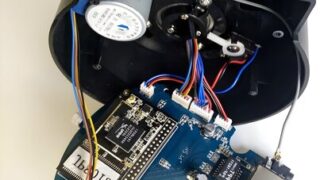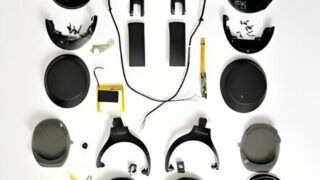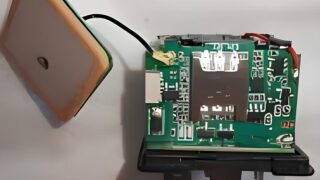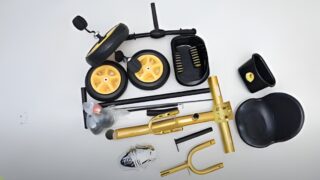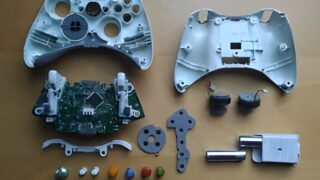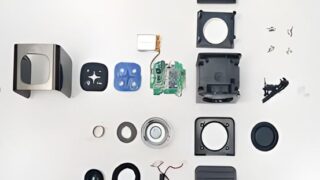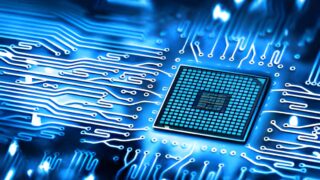A new manufacturing revolution has taken place thanks to 3D printing, which enables high precision and accuracy in the production of complex objects.
3D printer manufacturing is distributed globally, with major manufacturers located in different parts of the world. China, Taiwan, and the Czech Republic are some of the countries with the largest 3D printer manufacturing industries.
China has a stronghold on the 3D printer export market, with its products being imported by several countries, including the United States, Germany, the United Kingdom, France, Australia, and Japan.
3D Printer Product Inspection Service for Components
The Bill of Materials (BOM) is a comprehensive document that lists all the materials and components required to manufacture a product. In the case of a 3D printer, the BOM would contain various parts and materials, including motors, belts, bearings, electronics, and structural components like frame pieces.
A 3D printer is a complex machine made up of several sub-parts, as listed below:
- Frame
- Motors
- Extruder and extruding unit
- Print bed
- Nozzle
- Filament spool holder
- Control board
- LCD display
- Power supply
- Cooling fans
Some common defects that can be found in the sub-parts of a 3D printer:
- Defects may commonly occur in the frame subpart of a 3D printer, including inaccurate dimensions, poor welding, material defects, misaligned mounting holes, and missing or incorrect components.
- There are several common defects that can occur in the motor subpart of a 3D printer, including inconsistent performance, overheating, electrical issues, insufficient torque, and incompatibility with the power supply.
- Some common defects in the extruder and filament feeding system of a 3D printer include feeding issues, clogging, weak extruder motor, and worn or damaged parts.
- Common print bed defects include uneven surface, poor adhesion, scratches, non-uniform heating, and loose fasteners.
- Some common defects in 3D printer nozzles include clogging, inconsistent diameter, poor adhesion, worn or damaged tip, improper alignment, and incorrect temperature control.
- Common defects in filament spool holders include weak/unstable design, poor alignment, inaccurate dimensions, poor surface finish, inadequate grip, and fragile/brittle material.
- Common sub-part defects in 3D printers include faulty components, poor soldering, incorrect firmware programming, electrical interference, overheating, inadequate power supply, and incorrect labeling on control boards.
- There are several common defects that can occur in the LCD display of a 3D printer, including dead pixels, backlight bleeding, flickering, ghosting, stuck pixels, inaccurate colors and malfunctioning touch interface.
- Power supply problems such as overheating, voltage fluctuations, noise, poor wiring, insufficient power, safety issues, and incompatible supply voltage.
- Cooling fans can experience issues such as poor airflow, noise, broken blades, improper mounting, and faulty bearings.
When manufacturing 3D printers in China or Asia, it is strongly recommended to perform quality control and inspection of the sub-parts to guarantee the quality of the final product. This is because the subparts’ quality plays a crucial role in determining the 3D printer’s overall quality.
Our quality inspection company offers the services of quality inspectors located nearby your manufacturer who can assist in confirming that the correct components and materials are used during the production of the 3D printer.
3D Printer Product Quality Check Service for Manufacturing
The manufacturing process of 3D printers is complex and involves multiple stages, each with its set of quality risks that must be carefully managed to ensure the final product meets expectations.
Several quality check processes can be performed during the manufacturing of 3D printers to ensure the electronic and mechanical components meet the necessary standards.
For electronic parts:
- Functional testing for Motherboard
- Voltage and current measurement test for Power supply
- Electrical testing process for Motors
- Calibration process for Sensors
- Continuity test for Wiring and cables
- Visual inspection for Display screen
- Performance testing for Filament sensor
- Airflow task for Cooling fan
For mechanical parts:
- Diameter Check for Filament spool holder
- Caliper test for Extruder
- Temperature test for Hotend
- Bed leveling process
- Tension testing for Belts
- Visual inspection for Pulleys
- Ballbar test for Linear rails
- Functional testing for Endstops
- Vibration analysis method for Bearings
- Micrometer analysis for Nozzles
- Thermal test for Cooling system
Make sure your manufacturer performs those checks before delivering your 3D Printer. If they don’t, our quality inspection team can assist you with those quality control, inspection and on-site testing processes.
Quality control is essential for the successful mass production of 3D printers.
Our quality inspection services, including our Production Monitoring Service and Factory Audit Service, provide you with the support and resources needed to manage potential risks, identify and address quality issues, and keep your production process under control, ultimately ensuring the success of your mass production.
Following the manufacture of all the parts and sub-parts by sub-suppliers, the assembler (the factory where you purchase the final product) usually conducts the following procedures:
- Procuring parts from its own manufacturing division
- Inspection of the parts is conducted through an incoming quality control process. (or not)
- The proper alignment and attachment of the parts (or not)
- To ensure that the features of the 3D printer are functioning correctly, testing is often conducted on a test bench or with a human test bench.
- The final quality control check can be performed (or skipped in the case of rush shipments)
- Securely pack the product
There are inherent quality risks associated with each process that must be addressed (Especially if human processing is involved as usually not very repeatable).
Our quality inspection agency offers comprehensive solutions for managing the risks associated with 3D printer production, including the implementation of quality control check points and the provision of quality inspector monitoring throughout various manufacturing stages.
3D Printer Quality Control & Typical Defects
It is important to note that quality issues in 3D printers can stem from a range of factors, including the quality of components and materials, the skill of the workmanship, and the reliability of the testing process.
Defects that are frequently encountered in 3D printers include:
- Perpendicularity of axes
- Poor lubrication on shafts or dirt on shafts
- Poor condition of straps
- Z-spindle backlash
- Stop point positioning and condition of EOT sensors
- Malfunctioning stepper motors
- Broken belts or pulleys
- Faulty heating elements
- Malfunctioning or improperly calibrated bed leveling sensor
- Damaged thermistor or heater cartridge
- Filament feeding issues due to improperly adjusted extruder tension or worn-out gear
- Issues with the firmware or software controlling the printer
Are there any other defect types that you have encountered? If there are, please add them in the commentary section.
If you are struggling with quality issues related to your 3D printer and need help in identifying the root cause, we are here to assist you. Please use the button below to contact us.
3D Printer Quality Control Service, what do we check:
When conducting product inspection and quality control for 3D printers, our inspectors place particular emphasis on (but not limited to) the following:
- Calibration: Our inspectors ensure that the printer is properly calibrated and that all axes are aligned correctly.
- Our quality control service checks the cooling system, including fans and heatsinks, to ensure efficient temperature regulation of the 3D printer components.
- Check the printer’s hardware and software. The hardware should have a sturdy frame, level build plate, calibrated hotend, strong motors, and tight belts. Software tests should include checking the slicing software, printer firmware, connectivity, and user interface.
- Product’s functionality encompasses the operation of the user interface, firmware, and any additional features that may be included.
- The printer must have reliable connectivity and be compatible with multiple software and hardware platforms.
Need assistance with quality inspections of your manufactured 3D printers? Talk to our representative to arrange your next inspection by clicking on the button below:
3D Printer Factory Audit Service, what do we check
Quality problems and issues during 3D printer production and import can be avoided by carefully selecting the appropriate manufacturer.
Conducting a thorough factory audit or vendor evaluation before placing an order with a 3D printer manufacturer can be an effective way to prevent selecting an inadequate manufacturer and can save your time, money, and energy.
By utilizing the expertise of our electronic experts, you can obtain an impartial opinion of the 3D printer factory you are about to work with.
Are you in need of a factory audit or vendor assessment for your 3D printer production? Look no further than our quality assurance company, which can assist you in organising this process and perform a thorough check on several critical factors, including (but not limited to):
- Commercial license
- Demonstration area
- Customer testimonials
- Business framework
- Productivity potential
- Core vs non-core R&D capability.
- In-house vs Offshore manufacturing
- Manufacturing machinery
- Process control enforcement
- Evaluation instruments
- Validation process
Need help with a factory audit at a 3D printer manufacturer? Our team is here to assist. Click the button below to speak with one of our representatives and organize your next audit:
3D Printer Lab Testing Service, what do we check
When it comes to 3D printers, importers typically may neglect either compliance or reliability, rather than integrating them effectively.
Importing goods requires compliance with regulations, but it’s equally important to ensure the quality, durability, and reliability of 3D printers. Therefore, the question arises, how can you guarantee these attributes?
We have the necessary facilities and expertise to conduct a range of product lab tests that guarantee 3D printers meet the desired specifications. The tests we perform include:
Accreditation and compliance testing:
- Restriction of Hazardous Substances (RoHS) certification
- Federal Communications Commission (FCC) certification
- CE mark certification
- ENERGY STAR certification
- UL 2904 certification
- IEC Certification
System testing we can perform on site:
- Speed test: As a 3D printer lab testing service, we evaluate the printing speed of 3D printers. This involves checking the maximum achievable print speed, consistency across the print, effect on quality, and the printer’s ability to maintain speed and perform when printing multiple objects. We also test how varying print speeds affect different types of 3D prints.
- Accuracy test: In the accuracy testing of 3D printers, we typically evaluate the printer’s ability to accurately reproduce a 3D model or design. This can include testing the printer’s ability to maintain precise positioning and movement of the print head.
- Resolution test: As part of our 3D printer lab testing service, we conduct a resolution test to evaluate the printer’s ability to produce fine details accurately. This is done by printing a test object with small features of varying dimensions such as cylinders, cones, and spheres. We then measure each feature’s dimensions to determine the printer’s accuracy and precision. The higher the printer’s ability to produce smaller and more precise features, the better the printer’s resolution.
- Stability and vibration testing: In stability and vibration testing, we evaluate the printer’s ability to maintain stability and operate without excessive vibration during the printing process.
- Build volume test: This test involves verifying the maximum size of the part that the printer can produce without encountering issues such as warping or layer shifting.
- Material compatibility test: Our material compatibility testing service ensures that your printer can print with different materials. Through these tests, we can identify any issues or limitations related to material compatibility and provide recommendations to enhance your printer’s capabilities, allowing it to print with a wide range of materials.
- Durability test: The durability of a 3D printer is tested by evaluating its ability to withstand wear and tear. This includes checking moving parts and structural components, the extruder components, the print bed and build plate, and its ability to consistently produce high-quality prints over time. In order to improve its reliability, this test helps identify any shortcomings that may affect its durability.
- Noise test: To assess the acoustic performance of the printer, we conduct noise testing by measuring the sound pressure levels produced during operation. This helps us evaluate whether the noise levels meet the desired standards. During testing, we measure sound pressure levels at various points around the printer and at different distances, including different operating modes or speeds.
- Heat-up time test: To test the heat-up time and temperature control of 3D printers, we typically evaluate the time it takes for the printer to reach the desired temperature, the accuracy of its temperature sensors, the uniformity of heat distribution, and its ability to maintain stable temperatures during printing.
- Power consumption test: During power consumption testing, the 3D printer’s energy usage is measured while in operation. This helps identify any potential energy efficiency or power consumption issues that may affect the printer’s performance or lifespan.
We are available to help you with testing the quality of your 3D printers before they are shipped from the factory. Please click the button below to contact us for assistance.
Related Posts
Related Pages
GET READY TO SECURE YOUR SUPPLY CHAIN
Get valuable advices, tips, recommendations from our quality management experts and inspection specialists
CONTACT US NOW ! Feel the form below.


